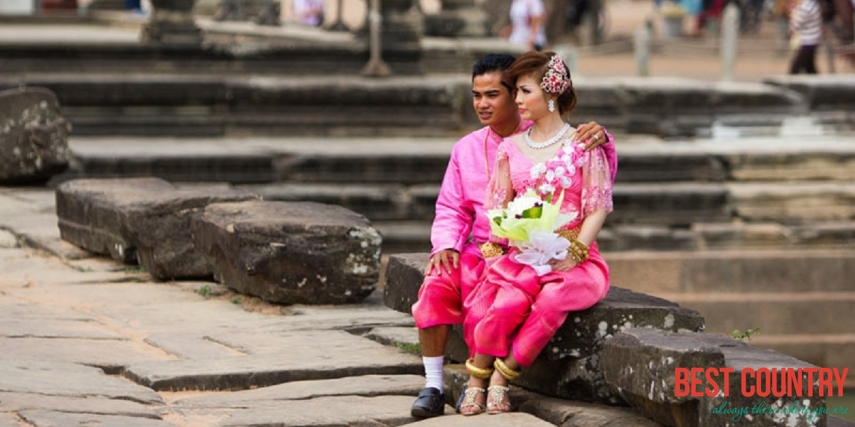Many Khmer traditions display interesting facts, but weddings are particularly fascinating. The rituals they have for weddings, their special care regarding how to employ the moments before and after wedding, and, last but not least, Khmer peculiar rules in this direction bring a special charm to the entire context.
Cambodian Wedding Traditions
Before the Wedding
Young men in Cambodia generally marry sometime between the age of 20 and 25, whereas young women – between 17 and 22. Traditionally, parents decide the future spouse for their kids.
More recently, due to globalization, many young Cambodians marry according to their own will and traditional customs in this direction are limited to the countryside, where population is more conservative.
Wedding Program
 There is a difference between the Cambodian traditional wedding and a contemporary wedding. Initially, weddings lasted for three days and nights.
There is a difference between the Cambodian traditional wedding and a contemporary wedding. Initially, weddings lasted for three days and nights.
Today, most of them only take one day and one night (the banquet), just like western weddings. However, there is a special program many newlyweds still respect today.
This program is based on the legend about the marriage of the Khmer prince Preah Thong, to the naga princess Neang Neak. It consists of 7 steps:
Hai Goan Gomloh – The groom, accompanied by his family, goes to the house of his future-to-be wife and presents his gifts.
Sien Doan Taa – A tea is served, to honor the ancestors. This step is rather optional.
Soat Mun – The bride and the groom are blessed by monks.
Gaat Sah – A cleansing ceremony symbolizing a new, fresh start. It implies a symbolic haircut, though this step traditionally employed a real haircut.
Bang Chhat Madaiy – The bride and the groom honor the parents.
Bongvul Pbopul – The bride and the groom are being blessed by married couples present at the ceremony.
Sompeas Ptem – A special ceremony symbolizing the binding together of the new couple, called the knot tying.
Highlights of the Khmer Wedding
Even if some weddings in Cambodia have lately adopted the Western style, much more de-symbolized, there are still parts of the ceremony that persist in most of the cases.
Here are a few such instances:
There are four important songs that are sung during the ceremony: Phat Cheay, Kang Saeuy, Bangvel Po Pil, Bay Khon Chang Dai, which are still very much in fashion.
The use of palm flowers as a token of good will and a way to bless the young couple.
Colors are important, but color code is not as relevant as you’d expect. In general, Cambodians use colors to designate wealth and wellbeing instead of assigning special meanings to them.
The banquet consists of music, dance, and plenty of food. Dishes are very complex, but they tend to be rather traditional in form and type. Dishes range from meat, fish, to vegetables, and fruits and sweets hold a special place in the ensemble.
Newlyweds are supposed to live (at least for a short time after the ceremony) with the wife’s parents, where the new son-in-law must assist and help his wife’s father.